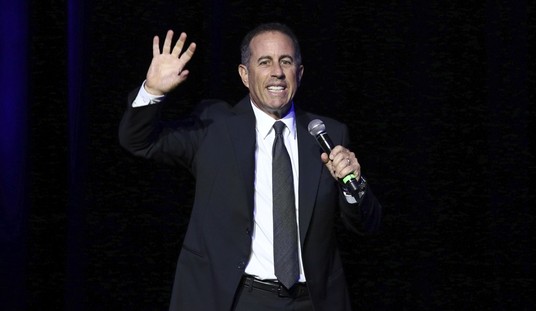This weekend, my wife and I watched the latest Mission Impossible movie starring Tom Cruise. Entertaining for sure, but for this political junky, it conjured up memories of what I heard constantly growing up in the 1970s and 80s, which was that Russia was our main enemy in the world. I offer the following purely as an intuitive opinion: I’m not an expert on the military. But I’m not oblivious to the world around me, either.
Politicians in both parties, elitist academics on both sides of the ideological spectrum, and the corporate media effectively lied to Gen Xers when they told us the Soviet Union was on par with America regarding our two countries' economic and military might. We were repeatedly told that Soviet technology was comparable to, or in some cases, exceeded American technology. I believe this fueled what at the time seemed a justified arms race for global superiority.
The James Bond movies from the 1960s, TV shows from the 70s like "Get Smart," and movies from the 80s like "Top Gun," "Red Dawn," "Hunt for Red October," and "WarGames," kept this East vs. West military rivalry going. But there was no actual rivalry. America was exceptional; the USSR wasn’t. The USSR was dysfunctional and stuck in perpetual economic stagnation, if not an actual depression.
It was never going to be any other way. It couldn’t be. Communism and its slightly less evil twin, Socialism, are failed economic systems that have failed everywhere.
Wherever you find Communism, misery and poverty are not only prevalent, they are endemic. Think China pre-1978, the Soviet Union pre-1991, Russia throughout the 1990s, Venezuela, North Korea, and the list goes on. Communism and Socialism are failed ideologies leading to misery, scarcity, and poverty.
Indeed, based on available data and metrics, it becomes quite clear that the Soviet Union was always our economic and military inferior. There’s really no shortage of facts to support my conclusion. You can look at it here, here, here, and here.
The invasion of Afghanistan in 1979 was a clue, as the USSR struggled with this conflict. Post-USSR, the first and second Russian-Chechen wars in the mid-to-late 1990s and early 2000s demonstrated Russia's military mediocrity. These wars resulted in significant losses for the Russian armed forces, showcasing their weaknesses and shortcomings.
Fast forward to 2023, and the ongoing Russian-Ukrainian war provides further evidence of Russia's military limitations. Objective observers have realized this conflict has become a stalemate, highlighting another embarrassment for the Russian Army. See here and here.
Russia was never a match for America. The Soviet economy was heavily centralized and plagued by inefficiencies, bureaucracy, and corruption. The planned economy failed to generate necessary incentives, sustainable growth, or innovation, leading to widespread scarcity, inferior-quality goods, and a brutally inferior standard of living.
Despite propaganda touting Soviet achievements, such as the space program, closer inspection reveals that these achievements were often isolated success stories rather than indicators of overall economic strength. Post-USSR, Russia inherited many of the same economic challenges.
Although it saw some economic growth in the early 2000s as a result of high oil prices, Russia's heavy reliance on oil and gas left it vulnerable to fluctuations in global energy markets, making it susceptible to economic downturns.
Even today, according to Investor News Network, despite oil being Russia’s top export, the United States produces far more oil than Russia. When including total production of petroleum and other liquids, America is ranked #1 with 20.2 million barrels per day of production, Saudi Arabia is #2 at 12.1 million, and Russia is #3 at 10.9 million.
In stark contrast, since the Industrial Revolution, the United States has been the world's largest and most dynamic economy. With its emphasis on free markets, innovation, and entrepreneurship, the US economy has proven resilient and adaptive.
Moreover, based on capitalism and individual freedom, the American system encourages competition, fosters innovation, and attracts talent and capital worldwide. Of the world’s largest 500 companies, 121 are headquartered in the United States. America also has the highest number of billionaires, with a combined net worth of $3.0 trillion.
So why were we led to believe the Soviet Union was on par with the United States? One possible answer is that it serves the interests of certain elites to downplay the differences between capitalism and socialism. By perpetuating the notion that both systems can deliver positive results, even exceptionalism, they blur the lines between the two ideologies in order to minimize the superiority of capitalism.
It's crucial to understand that central planning, state control, and suppression of individual liberties stifle innovation, limit economic growth, and ultimately lead to mediocrity. The Soviet Union's economic struggles and Russia's ongoing challenges are testimony to the inherent flaws of centrally planned systems, and this especially includes centrally planned economies.
Several factors, such as media narratives and political agendas, perpetuate the myth that the Soviet Union and Russia were competitive with the United States economically and militarily. We are seeing the same narrative today, except instead of Russia, it is China that is on America’s heels. But any objective examination of the data and outcomes will also reveal the inferiority of China’s capabilities relative to America’s.
Capitalism, focusing on free markets, innovation, and individual freedom, has consistently proven to be the superior system for delivering economic growth, prosperity, and exceptionalism.













